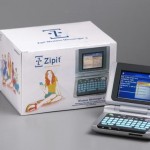 Hey, everyone. I know it's been a while since the Southeast Linux Fest happened down in wonderful South Carolina, but I finally got around to determining the winner of the raffle we held when we were there.
Hey, everyone. I know it's been a while since the Southeast Linux Fest happened down in wonderful South Carolina, but I finally got around to determining the winner of the raffle we held when we were there.
As it turns out, congratulations go out to Mark, N4TIR, for his winning raffle entry. Thank you to everyone who participated in the drawing, and to everyone who stopped by our booth to talk about geek tech, amateur radio, Open Source or simply to say hello. We want everyone to know that we had a great time and we'll definitely be back next year.
Oh, the prize is a ZipIt Z2 personal IM device. It's a neat toy by itself, but we're also throwing in a 2GB miniSD card and some instructions on how to turn your ZipIt into a Linux-based computer so you can have some real fun with it. Enjoy!
73 de The LHS Guys


